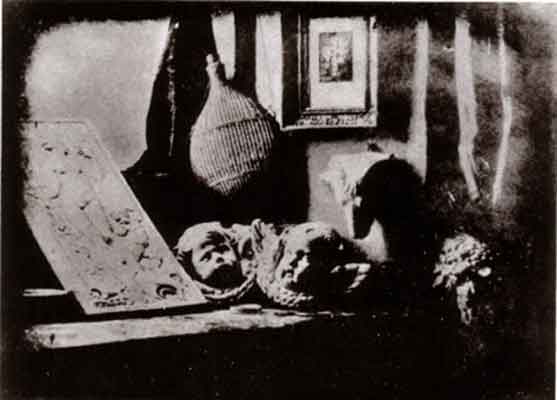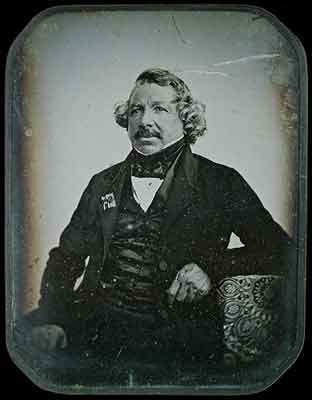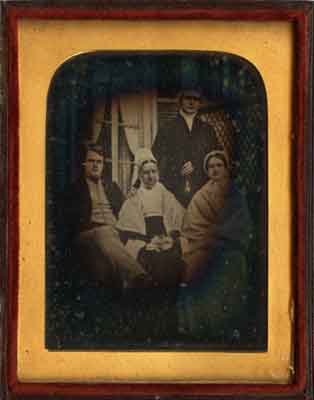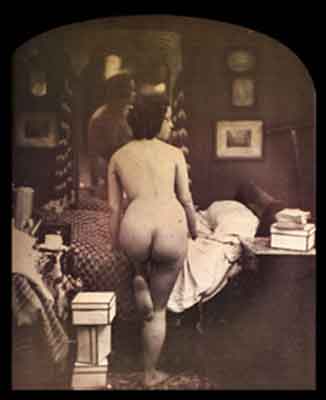1840 - 1860
Active period, 1839-1860.

Louis Daguerre
Still-life of Casts
Daguerreotype, 1837

Jean-Baptiste Sabatier-Blot
Louis Daguerre
Daguerreotype, 1844
The Frenchmen Louis Daguerre and Isadore Niépce (the son of Daguerre’s late partner Joseph Niépce) announced the discovery of the Daguerreotype process early in 1839. The very delicate photographic image was captured in a silver-mercury amalgam on a polished copper plate. Briefly, the image was made as follows. A silver-plated, polished copper plate was first suspended in iodine vapour to make it sensitive to light, then placed in a camera and exposed to light. After an appropriate exposure time the plate was withdrawn from the camera and placed over mercury fumes until an image appeared. The remaining light sensitive silver salts were removed using a solution of sodium thiosulphate, then known as ‘hypo’, and finally the plate was washed and dried.
The illustrations here give no impression of the impact made by the first viewing of a Daguerreotype. Perception of the amazing high resolution is followed by the surprise that the image changes repeatedly from positive to negative when moved slowly around its vertical axis.
Viewers of these ‘magic mirror’ images were utterly astonished and although Daguerre sold the process to the French government for unrestricted use in France, he shrewdly patented its use in some foreign territories, England included. In 1841, Richard Beard, a successful London coal merchant and speculator in patents, bought the rights to the patent in England, Wales and the Colonies. Both prospective Daguerreotypists and fortune hunters therefore had to buy from Beard licences to operate. One of the earliest provincial licencees was T. H. Ely who worked at a studio in the Royal Bazaar, Norwich.

Jean- Gabriel Eynard
The Gurney family in Paris
Daguerreotype, May 1843
[Special Collections at Haverford
College Library, Philadelphia]

Daguerreotypist unidentified
Nude Study
Daguerreotype, circa 1850